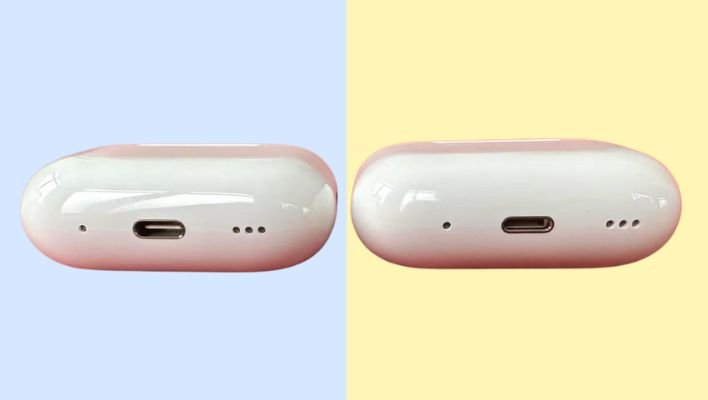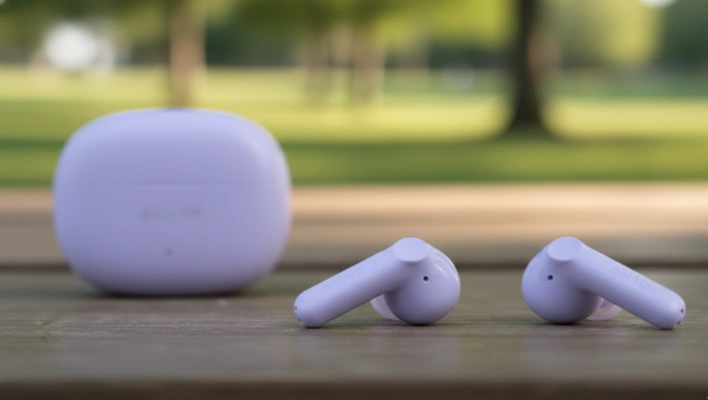The AirPods Pro 2 are Apple’s latest high-end true wireless earbuds, offering a range of impressive features like active noise cancellation, transparency mode, and spatial audio.
However, Apple has released two different versions of the AirPods Pro 2 – one with a Lightning connector and one with a USB-C connector.
In this article, we’ll explore the key differences between these two variants to help you decide which one is the best fit for your needs.
| Feature | AirPods Pro 2 Lightning | AirPods Pro 2 USB-C |
|---|---|---|
| Charging Port | Lightning | USB-C |
| Sound Quality | Identical | Identical |
| Active Noise Cancellation | Identical | Identical |
| Transparency Mode | Identical | Identical |
| Lossless Audio | Not Supported | Supports 20-bit 48kHz Lossless Audio when paired with Apple Vision Pro |
| Water and Dust Resistance | IP54 | IPX4 (Splash Resistant) |
| Interchangeable Earbuds | Yes | Yes |
| Interchangeable Charging Cases | No | No |
Airpods Pro 2 USB C vs Lightning: Review
Connectivity
The primary difference between the two AirPods Pro 2 models is the type of charging port used.
The Lightning version uses Apple’s proprietary Lightning connector, while the USB-C version features a USB-C port for charging.

The USB-C version offers some additional benefits, such as the ability to charge the earbuds and case using a standard USB-C cable, which may be more convenient for users who have already embraced the USB-C ecosystem.
However, for those who are already invested in the Apple ecosystem and have a range of Lightning-compatible devices, the Lightning version may be the more seamless choice.
Audio Quality and Features
When it comes to audio quality and features, the two AirPods Pro 2 models are largely similar.
Both offer the same high-quality sound, active noise cancellation, and transparency mode.
The only notable difference is that the USB-C version supports 20-bit 48kHz lossless audio when paired with the Apple Vision Pro, a feature not available on the Lightning variant.
However, this is a rather niche use case and may not be a significant factor for most users.
Water and Dust Resistance
Another key difference between the two models is their water and dust resistance ratings. The USB-C version of the AirPods Pro 2 is rated IPX4, meaning it is splash-resistant, while the Lightning version does not have any official water or dust resistance rating.
This means the USB-C version may be better suited for active lifestyles or environments where the earbuds may be exposed to water or sweat, such as during workouts or in light rain.
Compatibility and Interchangeability
The AirPods Pro 2 Lightning and USB-C versions are largely interchangeable, as the earbuds themselves are identical.
However, the charging cases are not compatible with each other, and you cannot swap the cases between the two models.
This means that if you already own one version of the AirPods Pro 2, you cannot simply purchase the other charging case to upgrade to the different connector type.
You would need to buy the complete set of earbuds and charging case for the version you want.
AirPods Pro 2 Lightning vs USB-C: Final Verdict
So, the primary differences between the AirPods Pro 2 Lightning and USB-C versions are the type of charging port, water and dust resistance, and support for lossless audio with the Apple Vision Pro.
The audio quality, active noise cancellation, and transparency mode are largely identical between the two models.
For most users, the choice between the two versions will come down to personal preference and compatibility with their existing devices and ecosystem.
The USB-C version offers some additional benefits, but the Lightning version may be the more seamless choice for those already invested in the Apple ecosystem.
You may like to see: How to stop Airpods falling out of your ears
Nick, the Co-founder of Earbuds Arena, is a seasoned freelance tech journalist with over ten years of experience covering wearables, apps, headphones, and gadgets. When he’s not immersed in the tech world, you’ll likely find him unwinding with video games, going for a run, or enjoying a game of soccer on the field.









